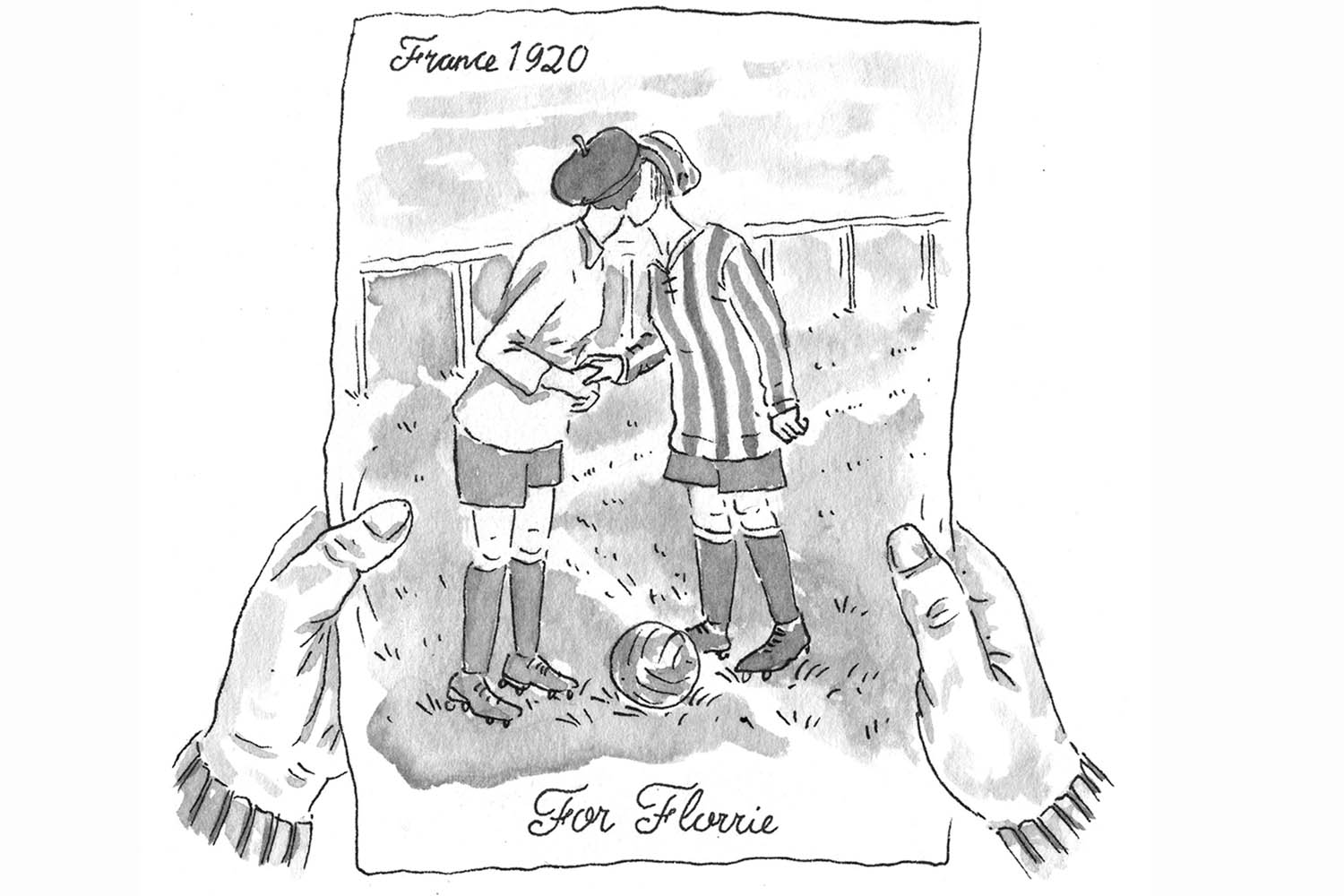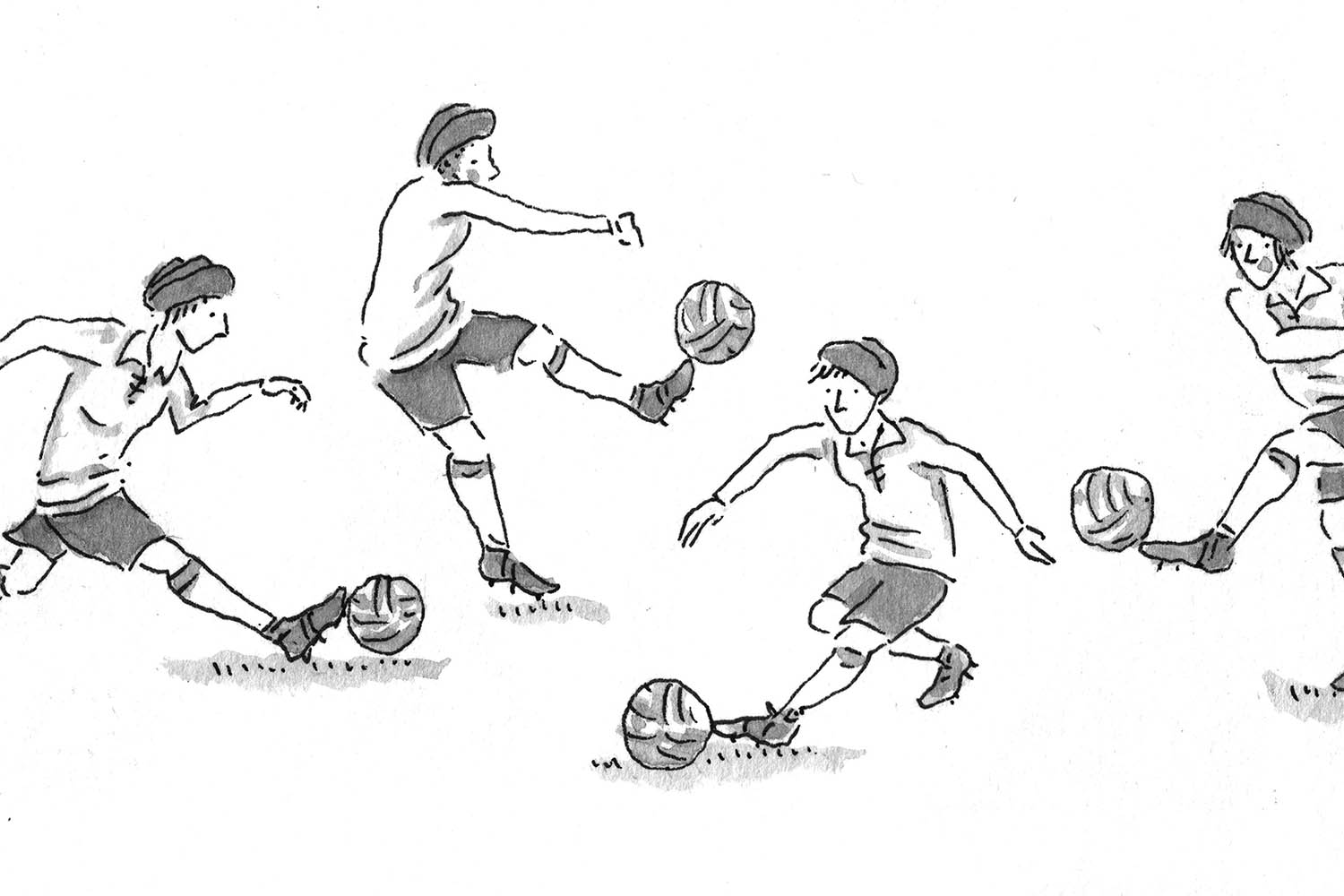With the Women’s Euros under way at last, what could be more timely than this beautiful, understated first graphic novel by Anna Trench? For my part, I can think of hardly anything – though I may be biased. Trench’s story, sketched in black and white from her heart, reminds me strongly of a comic I adore: Ethel & Ernest, Raymond Briggs’s exquisite 1998 account of the lives of his parents from their meeting in 1928 to their deaths in 1971. Here is the past, drawn without sentiment, but also without judgment, something of an achievement in our violently sententious times. Warm and inspiriting as well as delicately painful, it surely heralds the arrival of a big new talent in the world of the cartoon.
A fair few new comics these days seem to have their roots in a box in the attic, and Florrie: A Football Love Story – a mostly fictional story, but inspired by real events – is another. Clearing her great-aunt’s house for a final time after her death, Trench finds several unexpected bits and pieces, among them the skull of a ram. But the biggest surprise comes in the form of a cardboard box in which are hidden an old pair of football boots, a leather football and some letters. What do these things signify? Though Florrie had never married or had children, she belonged to a different time, growing up in rural Norfolk in the bleak years after the first world war (in 1921, a key date in the book, she would have been 19). Could these boots really have been hers? Had she once been a Saturday striker?
At first, it seems hard to believe. During all the bank holidays Trench spent with her as a child – visits for which footy-loving Anna invariably arrived in a football shirt herself – Florrie had never once mentioned the game. But it turns out that it was indeed so. Scanning a ladies’ team photograph for a match in August, 1921, her niece finds Florrie: in stripes and shorts, legs crossed and arms folded.

From the ‘beautiful’ Florrie: A Football Love Story
Scanning a photo for a match in 1921, her niece finds Florrie, legs crossed and arms folded
Florrie does several things at once, all of them well. Most obviously, it tells the story of Trench’s aunt’s life, and of how she was not, in the end, allowed to indulge her greatest passions – for the sport she loved to play, as well as for a woman who took it just as seriously as her. After the war, the long-term futures of legions of daughters fizzled when so many of the men failed to come home, even if some of these women sacrificed their hopes willingly to a degree (when she has the chance, Florrie won’t leave her dying father, still in mourning for a son lost at the front).
But it also reveals the sometimes hidden history of women’s football. In the early 20th century, there were about 150 women’s teams in the UK and many in France, where some of the book’s action takes place; one even went on a successful tour of the US. Such teams brought women from different backgrounds together (while Florrie works in her father’s antiquarian book shop, a teammate is in service), affording them a freedom on the pitch they did not always have in life. Trench draws these girls with such delicacy, even as, mud-splashed, they dash full pelt in the direction of the goal.
For many, a game was the highlight of the week. But in 1921, they were to be disappointed, cut off in their prime, when the men who comprised the English Football Association’s consultative committee decided, on 5 December, to ban them from playing the sport on the grounds that it was “unsuitable for females” – the very same females, of course, who’d worked in the munitions factories during the war effort.
For Florrie, as for her teammates in Holt Ladies, this ban has huge consequences (the clue’s in the book’s subtitle: a football love story). Life can change quickly as it takes to shout “offside”. How would she have felt about the Lionesses? About the many women’s clubs her niece has since played for down the years? Wouldn’t she have been thrilled? Though Trench chooses not to speculate, her book speaks for itself. Florrie passed her the ball, and she ran with it helter-skelter. She shot, and she scored.
Florrie: A Football Love Story by Anna Trench is published by Jonathan Cape (£20). Order a copy from observershop.co.uk for a 10% discount. Delivery charges may apply
Illustration by Anna Trench

